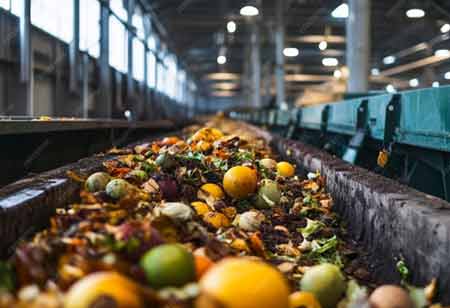THANK YOU FOR SUBSCRIBING
Be first to read the latest tech news, Industry Leader's Insights, and CIO interviews of medium and large enterprises exclusively from Food and Beverage Tech Review
How Will Evolving Regulations and Consumer Demands Shape the Food Industry?
In 2025, the food and beverage industry stands on the cusp of a critical transformation fueled by evolving regulations and changing consumer expectations.
-450x308_Mzf5.jpg)
By
Food and Beverages Tech Review | Monday, January 20, 2025
Stay ahead of the industry with exclusive feature stories on the top companies, expert insights and the latest news delivered straight to your inbox. Subscribe today.
In 2025, the food industry will undergo significant transformation driven by evolving regulations, consumer demands for health, sustainability, innovation, and the adoption of emerging technologies like AI.
FREMONT, CA: In 2025, the food and beverage industry stands on the cusp of a critical transformation fueled by evolving regulations and changing consumer expectations. Notably, the Food and Drug Administration (FDA) department recently revised its definition of healthy food for the first time in decades. This change aligns with modern dietary guidelines, reflecting a growing movement toward better, more transparent nutrition.
As the industry adapts to these new standards, several emerging trends are reshaping the way we think about food, health and the choices we make at the grocery store.
Promoting GLP-1 Medications
Following a year of uncertainty, the impact of GLP-1 weight loss medications—formulated to mimic the effects of a naturally occurring hormone that regulates blood sugar and appetite—on the food industry is becoming increasingly evident. The market is projected for significant growth in the coming years.
To meet the evolving needs of GLP-1 users, companies are premiumizing their offerings, particularly in areas such as protein, gut health, and nutrient-dense products. This shift will drive innovation as businesses adapt existing products and develop new ones to cater to the growing market.
Reducing Sugar and Salt
While the formulation of reduced-sugar and reduced-salt products has been a longstanding focus within the food industry, recent updates in policies are set to accelerate this shift significantly. New regulations like front-of-pack labeling and voluntary commitments between government and industry, coupled with growing consumer demand for healthier options, have intensified the development of these food products. Upcoming revisions to dietary guidelines are likely to emphasize further reductions in salt and sugar, encouraging innovation and adaptation to meet the evolving standards.
Food Additives
As concerns over the safety of certain food additives grow, their approval processes are set to undergo increased scrutiny, potentially leading to reformulations with widespread effects across the industry. Consumer advocacy and legislative pressures are pushing for the removal of harmful ingredients, with ongoing efforts to introduce regulations and improve food safety. Alongside these developments, there will be a heightened focus on regulatory reviews of chemicals in food as authorities continue to assess their long-term safety for consumers.
Chemical Contaminant
Naturally occurring and adulterant chemical contaminants in food are a major concern within the industry, demanding consistent efforts to reduce harmful exposure. Programs aimed at minimizing dietary risks focus on protecting vulnerable groups, such as children and pregnant women, while ensuring that nutritious food remains accessible.
The primary goal of these initiatives is to address the presence of dangerous substances like heavy metals in food products, reflecting the ongoing commitment to improving food safety and public health.
Artificial Intelligence (AI)
Organizations are developing advanced tools to harness AI’s potential, using it to accelerate product development, gather valuable consumer insights and streamline operations. Technology plays a central role in driving innovation and efficiency across various domains, ranging from food laboratories to kitchens.
As its influence grows, AI will continue to reshape the way businesses approach research, development, and consumer engagement, contributing to more dynamic and responsive food industry practices.
The industry increasingly focuses on health, sustainability and innovation, driving companies to adapt to the demands of a more informed and conscientious consumer base. Thriving in this rapidly evolving marketplace requires stakeholders to embrace emerging technologies, respond proactively to policy changes and prioritize transparency in their practices.
I agree We use cookies on this website to enhance your user experience. By clicking any link on this page you are giving your consent for us to set cookies. More info







